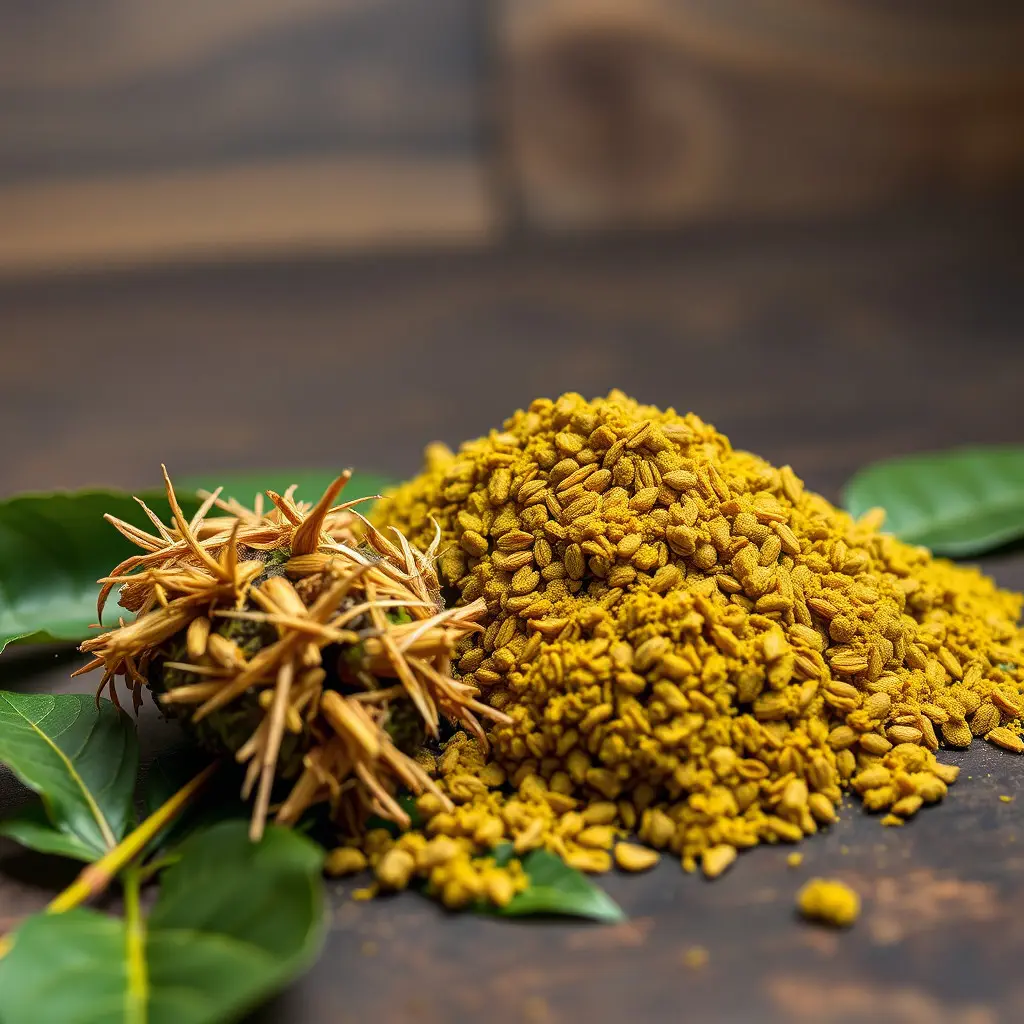Indiana's medical community is exploring kratom as a natural alternative for managing chronic pain, with studies indicating its potential as an opioid receptor interactor that provides relief with fewer side effects than traditional pharmaceuticals. The state's stance on kratom remains nuanced, reflecting a balance between its observed benefits and concerns over safety and efficacy. While some residents have reported significant pain relief from using kratom, research continues to uncover more about its analgesic properties and the risks involved. As of early 2023, kratom's legal status in Indiana is in flux, with specific regulations affecting its sale and use across different cities within the state. Users must stay informed about local laws, as they can vary significantly from one area to another. Those considering kratom for pain management should approach it cautiously, adhering to expert advice on dosage and strain selection—like Bali or Indo—and ensuring they obtain the substance from reputable sources. Indiana residents are increasingly turning to kratom as part of a holistic pain management strategy, with user communities providing valuable insights into safe and effective use. The ongoing research and policy discussions in Indiana are significant contributions to the national conversation on alternative therapies for chronic pain. Users should keep abreast of the latest information to navigate the evolving legal landscape of kratom in the state effectively.
explore the role of kratom as a natural approach to managing chronic pain, with a focus on its legal status and usage patterns in Indiana. This article delves into how individuals in the Hoosier State are integrating kratom into their pain management strategies, offering insights tailored to Indiana’s unique regulatory environment. Whether you’re seeking alternatives to traditional medications or simply curious about the plant’s potential benefits, this comprehensive guide will provide valuable information on navigating kratom’s role in chronic pain management within Indiana’s legal framework.
- Understanding Kratom's Role in Chronic Pain Management: The Indiana Perspective
- Navigating Legal Considerations and Kratom Availability in Indiana
- Effective Strategies for Incorporating Kratom into Your Chronic Pain Regimen in Indiana
Understanding Kratom's Role in Chronic Pain Management: The Indiana Perspective

In recent years, kratom has garnered attention within the Indiana medical community as a potential natural alternative for chronic pain management. Extracted from the leaves of Mitragyna speciosa, kratom interacts with the body’s opioid receptors, offering relief without the high potency and side effects commonly associated with traditional pharmaceuticals. The Indiana perspective on kratom is nuanced, with healthcare providers and patients alike exploring its efficacy and safety profile. Clinical observations have indicated that some individuals under the care of Indiana-based practitioners have reported significant reductions in pain levels after incorporating kratom into their treatment plans. This anecdotal evidence, while promising, is complemented by scientific research that aims to elucidate the mechanisms behind kratom’s analgesic properties. As a result, kratom has become a subject of considerable debate and scrutiny within Indiana’s medical circles, with ongoing studies attempting to quantify its benefits and risks in managing chronic pain. The state’s approach to kratom reflects a broader national conversation on the role of alternative therapies in pain management strategies, highlighting the need for further research to inform clinical practices and policy decisions.
Navigating Legal Considerations and Kratom Availability in Indiana

In Indiana, individuals seeking to manage chronic pain through kratom must navigate a complex web of legal considerations and availability issues. As of the knowledge cutoff date in early 2023, kratom is not explicitly listed as a controlled substance at the federal level by the DEA, which has led to varying state regulations. In Indiana specifically, the legality of kratom has been subject to change; it was made a Schedule I controlled substance effective July 1, 2021, but this designation faced legal challenges and the sale of kratom products remained permissible under certain conditions until further notice. This dynamic legal landscape underscores the importance for consumers in Indiana to stay informed about the current status of kratom legislation within their state. The availability of kratom products in Indiana can vary from city to city, with some localities allowing its sale and others enforcing strict regulations or bans. Consumers looking to purchase kratom should be aware that while it may be available in some head shops, specialty stores, or online, they must do so responsibly and within the confines of the law as it stands. It is advisable for those interested in using kratom for pain management in Indiana to consult both state and local regulations and to stay up-to-date with any legislative changes that may impact access to these products.
Effective Strategies for Incorporating Kratom into Your Chronic Pain Regimen in Indiana

In Indiana, individuals suffering from chronic pain are exploring alternative treatments, with a growing interest in kratom as a potential solution. Kratom, derived from the leaves of the Mitragyna speciosa tree, has garnered attention for its potential analgesic properties. When incorporating kratom into your chronic pain regimen, it’s crucial to approach it with caution and informed decision-making. Firstly, one should consult with healthcare professionals who are well-versed in the use of kratom, as it can interact with other medications and may have side effects. Indiana residents looking to use kratom should seek strains that are known for their pain-relieving effects, such as Bali or Indo strains, which are commonly reported to provide sedating and analgesic properties. It’s important to start with a low dose and gradually titrate the amount based on individual response, as kratom sensitivity can vary greatly among users. Additionally, creating a consistent dosing schedule and maintaining open communication with your healthcare provider can help in effectively managing chronic pain with kratom. Indiana’s growing community of kratom users often shares experiences and best practices online, which can be a valuable resource for those new to kratom use. Always ensure that the kratom product is sourced from reputable vendors, as the quality and purity can significantly impact its efficacy and safety. With careful consideration and professional guidance, Indiana residents can consider kratom as one of many tools in their holistic pain management strategy.
In conclusion, the evidence presented from the perspective of Indiana highlights that kratom may offer a valuable option for chronic pain management. As outlined in this article, understanding its role, navigating the legal landscape, and integrating it effectively into one’s pain regimen are crucial steps for residents seeking relief. Indiana’s approach to kratom use underscores the importance of considering this plant as part of a holistic approach to chronic pain treatment. While further research is warranted to fully understand its efficacy and long-term implications, the current insights provide promising avenues for those managing chronic pain in Indiana. It’s clear that kratom remains a topic of significant debate and requires careful consideration within the framework of state laws and individual health needs.






